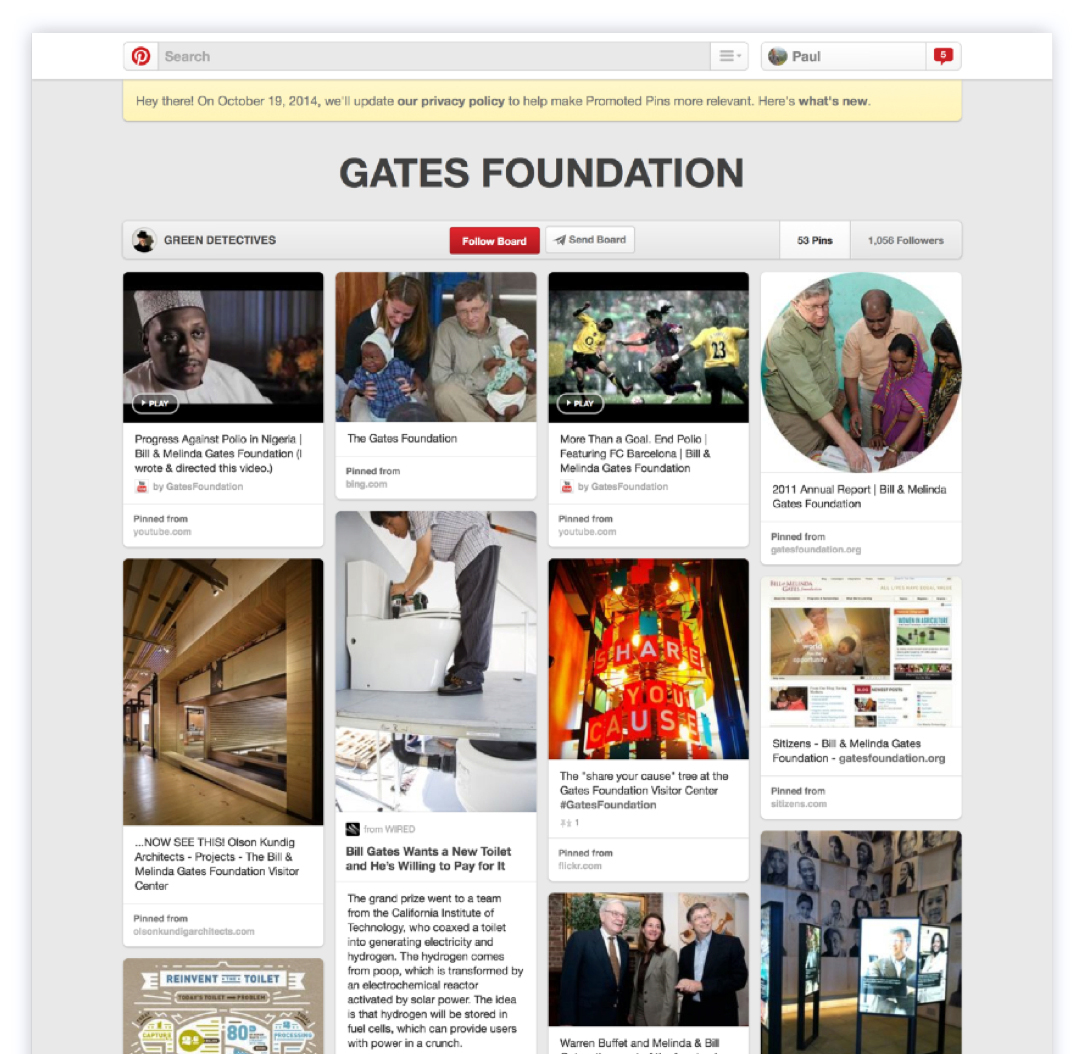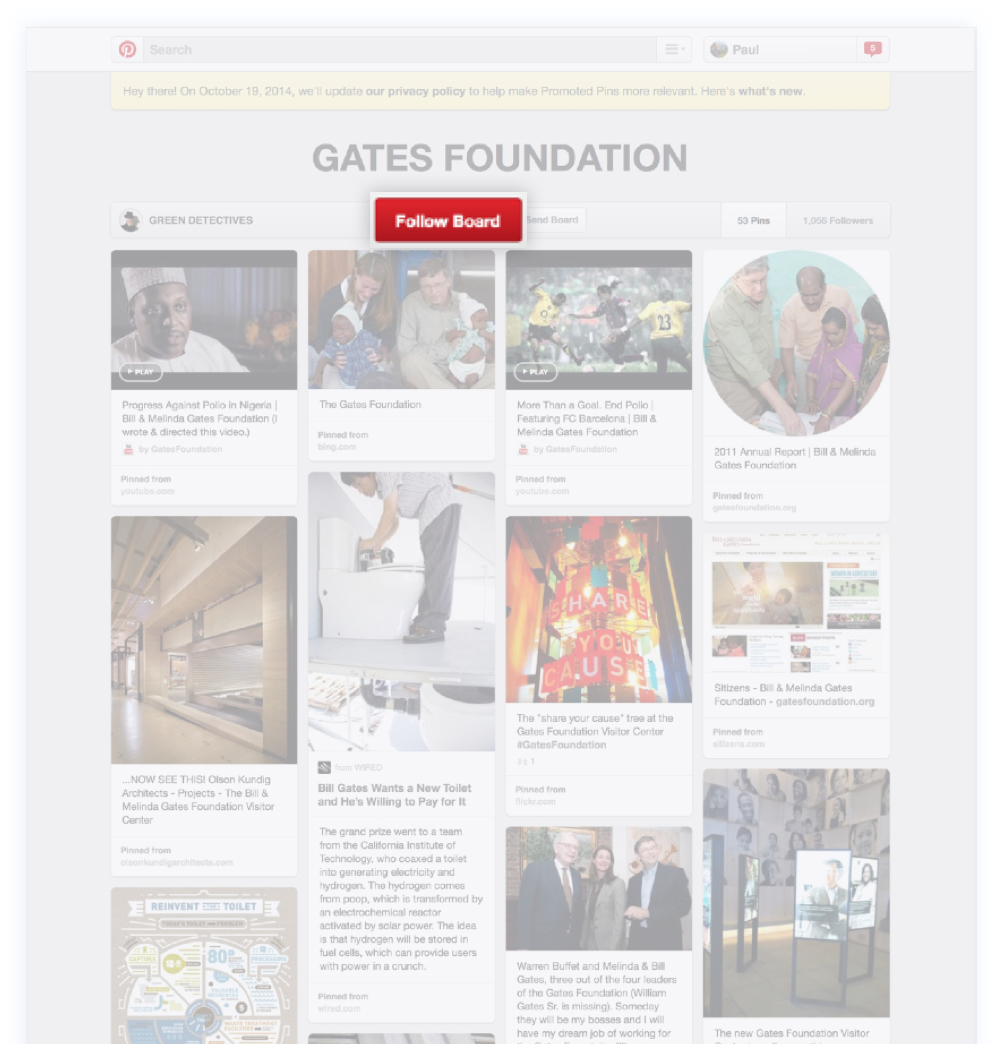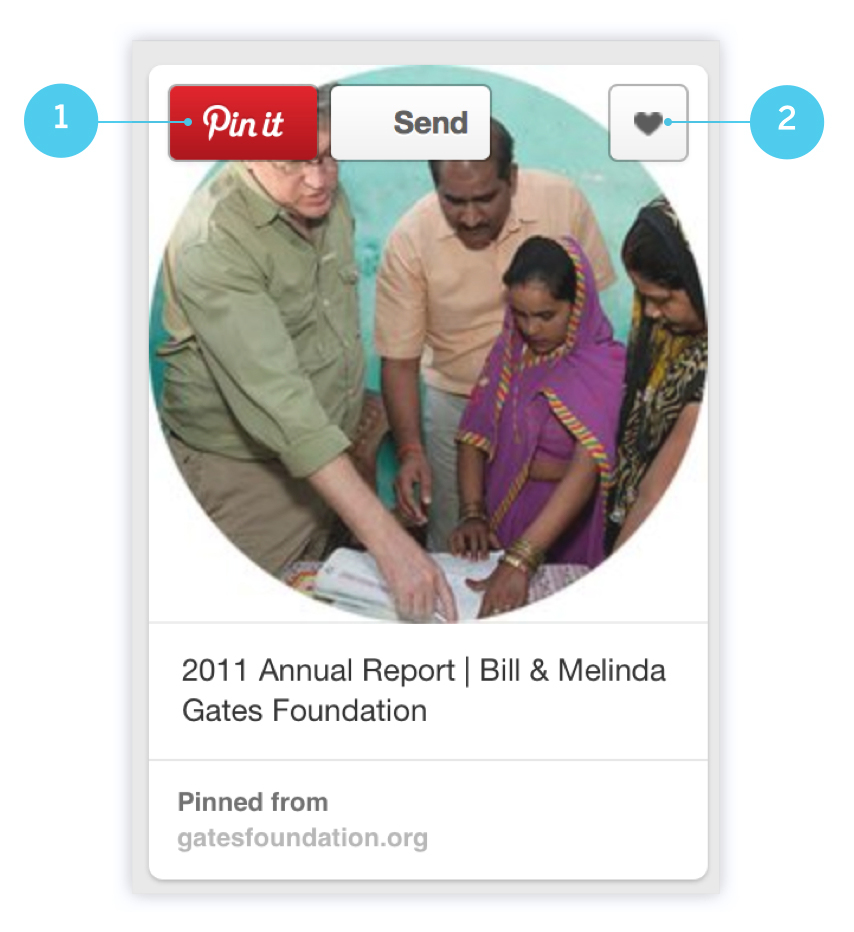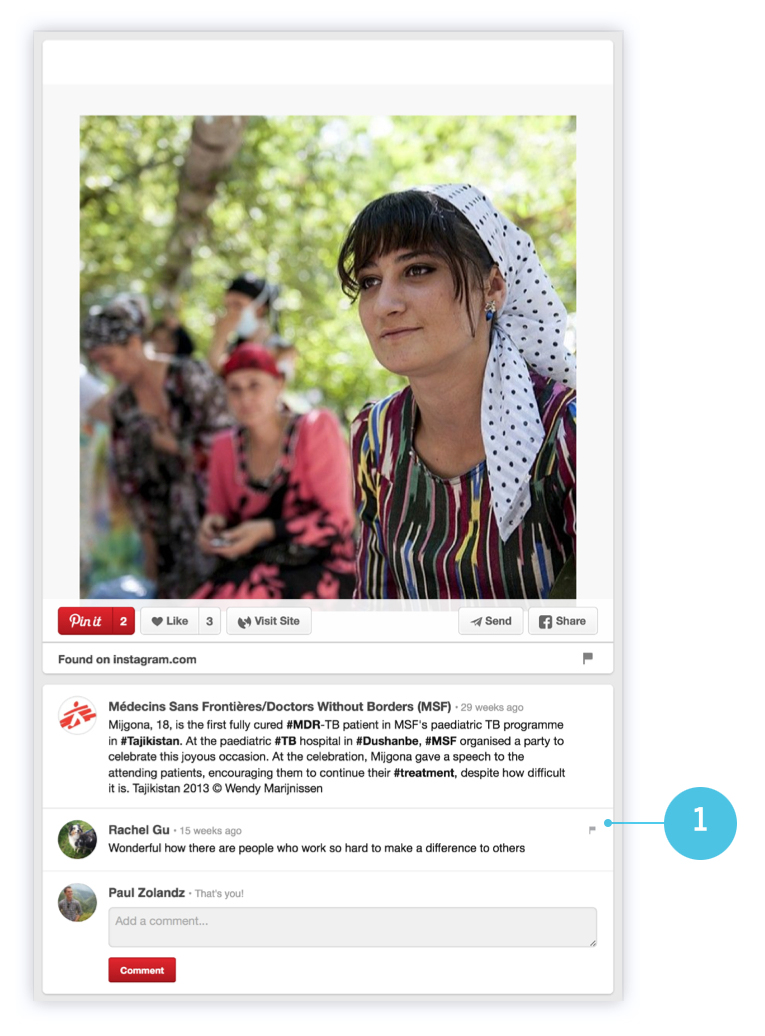A Guide to Pinterest
What does Pinterest do?
Pinterest is a social network that allows users to share images and videos by pinning, or posting, them to virtual boards. Boards are a collection of Pins, usually with a common theme. Users can post on their own boards or shared boards, and can also browse what others have pinned to discover new interests.
The basics of Pinterest.
Who does Pinterest reach?
- Large community. Pinterest boasts a growing community of 40 million active users and more than 70 million total users. Twenty-three percent of users interact with the platform at least once per day, and it is the world’s fourth-largest referrer of online traffic.
- Women. Women have always made up the vast majority of Pinterest users—approximately 80 percent of pinners are female. But that dynamic has become even more pronounced in recent years, as 92 percent of all content on the site is now pinned by women.
- North Americans. Pinterest has established its strongest presence in North America, with 79 percent of its active users residing in the United States as of July 2013. However, the site is beginning to break through on other continents—45 percent of new users in June 2013 live in countries other than the United States, a reflection of the company’s desire for a more international community.
Find more information about Pinterest users by reading this report by RJMetrics or this report by Semiocast.
What do I need to use Pinterest?
- Technology: Computer/phone/tablet, Internet connection, high-quality photographs or videos
- Suggested Frequency: Daily
What can I share on Pinterest?
You can pin images or videos, accompanied by a caption of up to 500 characters. Your Pins can link to external websites or platforms that feature your stories in more expanded—often written—formats.
How do I use Pinterest?
Pinterest offers an online guide specifically geared toward helping businesses and nonprofits get started. It contains tips on setting up your account, best practices for creating boards and pinning, and much more.
You can also get more in-depth insights into useful ways to use Pinterest for social good by checking out [these strategies from Mashable or these tips from Constant Contact.
Why should I use Pinterest?
If you are looking to share stories featuring compelling images and video, particularly with a female audience, consider using Pinterest. Its ability to intensely engage a targeted but growing user base and drive large amounts of traffic to external sites makes Pinterest a useful tool for digital storytelling.

Organizations should create boards that showcase different aspects of their work - but make sure each board has enough pins to make it feel substantial. Your boards should be clearly named so people can tell what's on them and have an engaging cover pin that gives other pinners a sense of what's on the board. Users can follow specific boards, so not every board has to appeal to every person.
What are the strengths and limitations of Pinterest?
Pros
- Repinning. Pinterest users can repin content they like, sharing it with their friends. This can expand the reach and audience for your stories.
- Traffic driver. Because Pinterest allows you to link your photo or video to an external web page, users can easily access more content on your website or another platform. This is one reason why Pinterest is one of the top sites in the world for referring online traffic.
- Cost. Pinterest is completely free to use, making it an excellent option for organizations on a budget.
- Highly targeted. If you’re looking to target a very specific audience—primarily younger American women, but with a growing international presence—then you’re in luck. Pinterest does a better job than almost any other platform.
Cons
- Limited reach. While Pinterest is incredibly popular and frequently used with its core demographic, it struggles to appeal to others outside that scope—particularly men. This may present challenges for organizations looking for broader appeal.
- Less conversational. Pinterest doesn’t provide many opportunities for dialogue between users beyond simply repinning others’ Pins. This makes it difficult to achieve deep, thoughtful engagement on Pinterest beyond clicking and sharing. However, it is possible to direct users from Pinterest to other platforms where engagement is easier.
- Material focus. Much of the content shared on Pinterest focuses on material things—home décor, fashion, hair and beauty tips are all popular board types, along with recipes and DIY crafts. It may be more difficult for organizations to break through all of that content, particularly by sharing content with a very different direction and purpose.
Find more pros and cons by checking out this blog post from Tyrrell Marketing.
What story formats work best on Pinterest?
Pins with high-quality images or videos and brief, thoughtful descriptions work best on Pinterest. Images should generally be vertically oriented to optimize mobile presentation. The associated caption should avoid timely promotional information, allowing it to remain relevant long after it is posted.
Pinterest includes several additional best practices in its online guide.
What’s the most effective way to share stories on Pinterest?
Create boards that showcase different aspects of your work—but make sure each board has enough Pins to make it feel substantial. Your boards should be clearly named so people can tell what’s on them and have an engaging cover Pin that gives other pinners a sense of what’s on the board. Users can follow specific boards, so not every board has to appeal to every person.
Once you’ve created boards, you can start pinning. You should pin at least once a day to ensure that your Followers are receiving fresh content. Your Pins should link back to a helpful and interesting external site, creating a better experience for your Followers and driving more traffic to your content.
You should also look for opportunities to pin quality content from other sources that might be related to your mission. Your Followers will appreciate the interesting Pins and the content creators will appreciate the referral traffic—opening the possibility for future engagement. Pinterest also offers other tips for pinning your stories in its online guide.
How do Pinterest’s users share and engage with content?
Pinterest offers a limited number of options for engagement and sharing among users.

Pinners can follow others' boards.

- Repin. Pinners can repin content they enjoy to their own boards.
- Like. Pinners can Like other users’ Pins.
How should I engage users on Pinterest?
You should engage with other pinners on a regular basis. Following other users’ boards and repinning their content when it relates to your work or mission is a great way to connect with people and encourage them to follow you back and repin your content in return.
Additionally, Liking and commenting on others’ Pins can help you engage people who are sharing content related to your work, form new relationships and potentially expand your audience.

Pinners can engage one another by commenting on them.
Pinterest also offers other tips for engaging with other pinners in its online guide.
How can I increase visibility on Pinterest for my content?
The search function is a key way for pinners to find new content—so it’s important for organizations to make sure their Pins can be easily found in searches. Pinterest offers a few tips:
- Get specific. Think about what people who are looking at a certain Pin might have searched for. Mention the most compelling and distinct parts of the Pin in your description, and your Pins will be more likely to surface when people get specific in searches.
- Don’t just drop in keywords or hashtags. The description is an important part of captivating pinners. Set a scene that incorporates the right search words, and you’ll help pinners imagine themselves with your Pin.
Pinterest also offers more tips for increasing the visibility of your content in its online guide.
RELATED ON STORYTELLING FOR GOOD
EXTERNAL RESOURCES
Related, on Storytelling for Good
Trickle Up Shares Personal Journey in Email Campaign
- 1 Saved
Use Stories to Build Communities That Can Be Harnessed to Act
- 1 Comment
- 1 Saved
Drive Results With a Strategic Engagement Strategy
- 5 Comments
Video Blogging Brings Stories to Life
- 1 Saved
5 Storytelling Best Practices at the Heart of Humans of New York
- 1 Comment
- 11 Saved





Be the first to comment